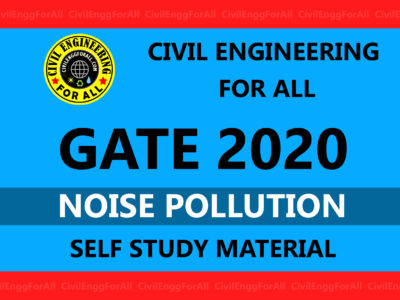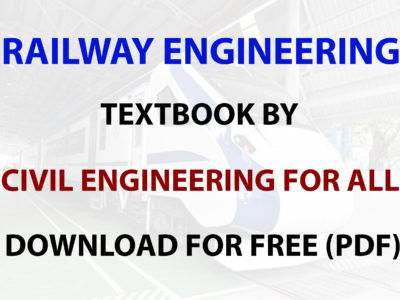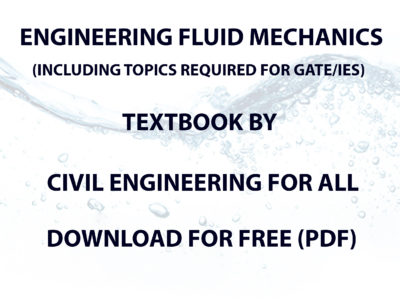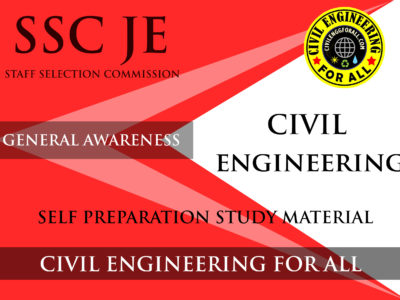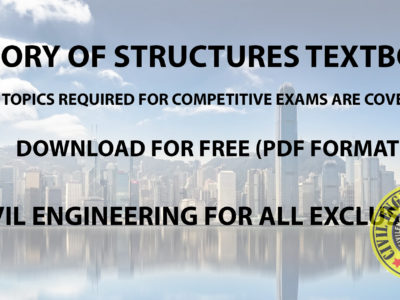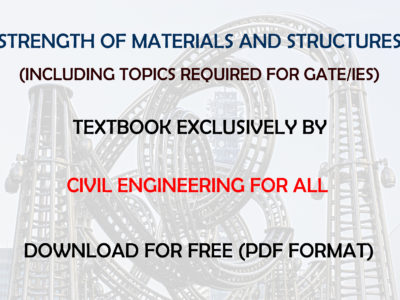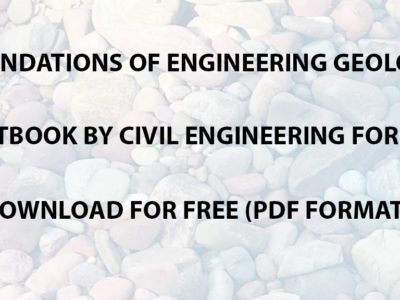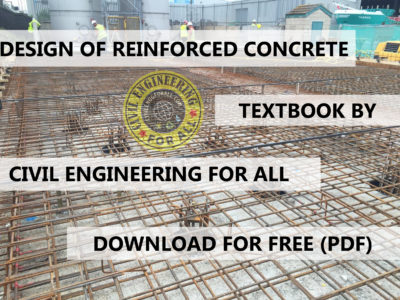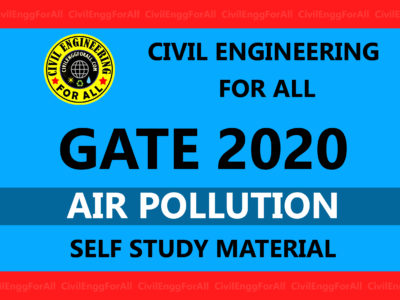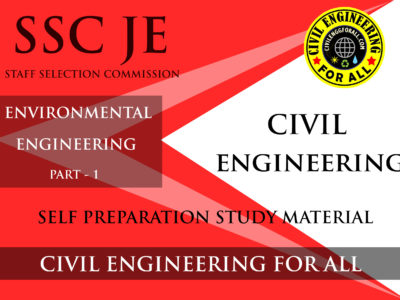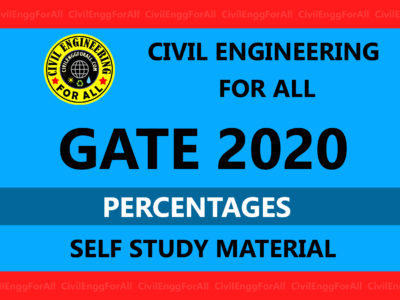
NOTE : BELOW ARE THE TOPICS COVERED MENTIONED IN BRIEF. THERE ARE MANY OTHER RELATED TOPICS IN THE BOOK. KINDLY DOWNLOAD THE BOOK AND CHECK IF THE REQUIRED TOPIC IS PRESENT.
TOPICS COVERED IN THIS BOOK
- SIMPLE STRESS AND STRAIN
- STRESS, SHEAR STRESS, St.VENANT’S PRINCIPLE
- STRAIN, MODULUS OF ELASTICITY, MODULUS OF RIGIDITY
- PRINCIPLE OF SUPERPOSITION, ELONGATION
- STATICALLY INDETERMINATE SYSTEMS
- TEMPERATURE STRESSES, SHRINKING, STRAIN ANALYSIS
- FACTOR OF SAFETY. ELASTIC CONSTANTS, RELATIONS BETWEEN ELASTIC CONSTANTS, 3 DIMENSIONAL STRESS SYSTEMS
- COMPOUND STRESS AND STRAIN
- STRESS ANALYSIS, PRINCIPAL STRESSES, MAXIMUM SHEAR STRESSES
- NORMAL STRESS ON PLANES OF MAXIMUM SHEAR STRESS
- MOHR’S STRESS CIRCLE
- THREE COPLANAR STRESSES
- ELLIPSE OF STRESS
- STRAIN ANALYSIS, PRINCIPAL STRAINS, PRINCIPAL SHEAR STRAINS
- SUM OF DIRECT STRAINS ON TWO PERPENDICULAR PLANES
- MOHR’S STRAIN CIRCLE
- PRINCIPAL STRESSES FROM PRINCIPLE STRAINS
- STRAIN ROSETTE
- STRAIN ENERGY
- SHEAR STRAIN ENERGY IN THREE DIMENSIONAL STRESS SYSTEM
- SHEAR ENERGY DUE TO BENDING AND TORSION, BARS OF TAPERING SECTIONS
- STRESSES DUE TO VARIOUS TYPES OF LOADING
- SHEAR FORCE AND BENDING MOMENT
- TYPES OF SUPPORTS AND BEAMS
- SHEAR FORCE
- BENDING MOMENT
- RELATION BETWEEN LOAD, SHEAR FORCE, BENDING MOMENT
- SHEAR FORCE AND BENDING MOMENT DIAGRAMS FOR CANTILEVERS AND SIMPLY SUPPORTED BEAMS
- BEAMS WITH OVERHANGS
- BEAMS WITH VARYING DISTRIBUTED LOAD
- BEAMS SUBJECTED TO COUPLES
- BEAMS WITH HINGED JOINTS
- INCLINED LOADING
- LOADING AND BENDING MOMENT DIAGRAM FROM SHEAR FORCE DIAGRAM
- BENDING STRESS IN BEAMS
- THEORY OF SIMPLE BENDING
- MOMENT OF INERTIA
- BEAMS WITH UNIFORM BENDING STRENGTH
- FLITCHED OR COMPOSITE BEAMS
- REINFORCED CONCRETE BEAMS
- UNSYMMETRICAL BENDING
- DETERMINATION OF PRINCIPAL AXES
- ELLIPSE OF INERTIA OR MOMENTIAL ELLIPSE
- COMBINED DIRECT AND BENDING STRESS
- MASONARY DAM, RETAINING WALLS
- SHEAR STRESS IN BEAMS
- VARIATION OF SHEAR STRESS
- SHEAR STRESS VARIATION IN DIFFERENT SECTIONS
- BUILT UP BEAMS
- SHEAR STRESS IN THIN SECTIONS
- SHEAR CENTRE
- SLOPE AND DEFLECTION
- BEAMS DIFFERENTIAL EQUATION
- SLOPE AND DEFLECTION AT A POINT
- DOUBLE INTEGRATION METHOD
- MACAULAY’S METHOD
- MOMENT-AREA METHOD (MOHR’S THEOREMS)
- STRAIN ENERGY DUE TO BENDING
- CASTIGLIANO’S FIRST THEOREM (DEFLECTION FROM STRAIN ENERGY)
- DEFLECTIONS BY CASTIGLIANO’S THEOREM
- IMPACT LOADING ON BEAMS
- CONJUGATE BEAM METHOD
- DEFLECTION DUE TO SHEAR
- MAXWELL’S RECIPROCAL DEFLECTION THEOREM
- BETTI’S THEOREM OF RECIPROCAL DEFLECTIONS
- FIXED AND CONTINUOUS BEAMS
- EFFECT OF FIXIDITY
- MOMENT-AREA METHOD
- MACAULAY’S METHOD
- CLAPEYRON’S THREE MOMENT EQUATION
- MOMENT DISTRIBUTION METHOD
- METHOD OF FLEXIBILITY COEFFICIENTS
- BENDING OF CURVED BARS
- BARS OF SMALL INITIAL CURVATURE
- BARS OF LARGE INITIAL CURVATURE
- STRESSES IN CIRCULAR RING AND CURVED BARS
- DEFLECTION OF CURVED BARS, DEFLECTION BY STRAIN ENERGY
- TORSION
- CIRCULAR SHAFTS, POWER TRANSMISSION
- TORSION OF TAPERED SHAFT, SHAFTS IN SERIES AND PARALLEL
- STRAIN ENERGY IN TORSION, COMBINED BENDING AND TORSION
- THIN TUBULAR SECTIONS
- THIN WALLED SECTIONS
- THIN RECTANGULAR MEMBERS
- SPRINGS
- CLOSE COILED HELICAL SPRINGS
- SPRINGS IN SERIES AND PARALLEL
- CONCENTRIC (CLUSTER) SPRINGS
- OPEN COILED HELICAL SPRINGS
- FLAT SPIRAL SPRINGS
- LEAF OR LAMINATED SPRINGS
- COLUMNS AND STRUTS
- EULER’S THEORY
- EQUIVALENT LENGTH
- LIMITATIONS OF EULER’S FORMULA
- RANKINE’S FORMULA
- STRUT WITH ECCENTRIC LOAD, INITIAL CURVATURE, LATERAL LOADING
- TIE WITH LATERAL LOADING
- STRUTS OF VARYING CROSS-SECTION
- CYLINDERS AND SPHERES
- THIN CYLINDERS
- THIN SPHERICAL SHELL
- THIN CYLINDER WITH SPHERICAL ENDS
- VOLUMETRIC STRAIN
- WIRE WINDING OF THIN CYLINDERS
- THICK CYLINDERS
- COMPOUND TUBES
- HUB ON SOLID SHAFT
- THICK SPHERICAL SHELLS
- ROTATING DISCS AND CYLINDERS
- THIN ROTATING RING
- DISC OF UNIFORM THICKNESS
- LONG CYLINDER
- DISC OF UNIFORM STRENGTH
- COLLAPSE SPEED
- THEORIES OF FAILURE
- DESIGN OF THICK CYLINDRICAL SHELL
- GRAPHICAL REPRESENTATIONS OF THEORIES OF FAILURE
- CIRCULAR PLATES
- SYMMETRICALLY LOADED CIRCULAR PLATES
- UNIFORMLY DISTRIBUTED LOAD ON A SOLID PLATE
- CENTRAL POINT LOAD ON SOLID PLATE
- LOAD ROUND A CIRCLE ON A SOLID PLATE
- ANNULAR RING, LOAD ROUND AN INNER EDGE
- PLASTIC BENDING AND TORSION
- PLASTIC THEORY OF BENDING
- MOMENT OF RESISTANCE AT PLASTIC HINGE
- SYMMETRICAL BENDING
- UNSYMMETRICAL BENDING
- COLLAPSE LOAD
- TORSION OF CIRCULAR SHAFTS
- COMBINED DIRECT AND BENDING STRESS
- PLANE FRAME STRUCTURES
- PERFECT FRAMES
- REACTIONS AT THE SUPPORTS
- STATICALLY DETERMINATE FRAMES
- ASSUMPTIONS IN THE ANALYSIS OF FRAMES
- SIGN CONVENTION
- METHODS OF ANALYSIS
- METHOD OF JOINTS
- METHOD OF SECTIONS
- PROPERTIES AND TESTING OF MATERIALS
- MECHANICAL PROPERTIES
- FACTOR SAFETY
- TENSILE TESTING
- COMPRESSION TESTING
- TORSION TESTING
- HARDNESS TESTING
- IMPACT TESTING
- COLUMN TESTING
- CREEP TESTING
- FATIGUE TESTING
- SUMMARY, OBJECTIVE TYPE QUESTIONS, REVIEW QUESTIONS AT THE END OF EVERY MAJOR CHAPTER
BRIEFLY EXPLAINED TOPICS – A SAMPLE TO UNDERSTAND THE QUALITY OF THIS TEXTBOOK
STATICALLY INDETERMINATE SYSTEMS
When a system comprises two or more members of different materials, the forces in various members cannot be determined by the principle of statics alone. Such systems are known as statically indeterminate systems. In such systems, additional equations are required to supplement the equations of statics to determine the unknown forces. Usually, these equations are obtained from deformation conditions of the system and are known as compatibility equations. A compound bar is a case of an indeterminate system.
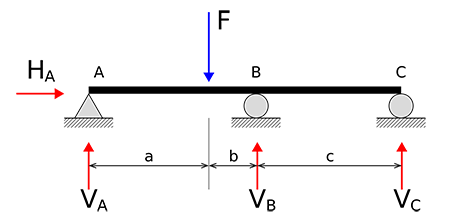
STRENGTH OF MATERIALS IES MASTER GATE MATERIAL : CLICK HERE
SHEAR FORCE AND BENDING MOMENT
A structural element which is subjected to loads trans- verse to its axis is known as a beam. In general, a beam is either free from any axial force or its effect is negligible. Analysis of beams involves the determination of shear force, bending sections.This chapter deals with the finding of shear force and bending beams. Analysis of beams to find the deflections is dealt in later chapter. moment and the deflections at various moment at a section of different kinds of beams.
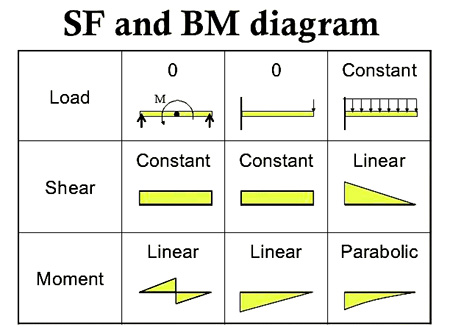
Usually, a beam is considered horizontal and the loads vertical. Other cases are considered as exceptions. A point load is assumed to act at a concentrated or point, though in practice it may be distributed over a small area. length of the beam.The rate of loading may be uniform or may A distributed load is one which is spread over some vary from point point.
STRENGTH OF MATERIALS ACE GATE MATERIAL : CLICK HERE
TORSION
A shaft is an example of a member torsion. Shafts are widely used in engineering applications to transmit power point to another, from a motor to a machine tool, from an engine to the rear axle of an automobile or from a steam or hydraulic turbine to an electric generator The shafts used for the purpose may be solid or hollow. When a shaft is made to transmit power, a pure twisting from one couple or torque acts about its polar axis. Shear stresses are set up perpendicular to the radius at all transverse sections. As a result, complementary shear stresses are developed on the longitudinal planes which cause a distortion of filaments. As the cross-section across any transverse plane is symmetrical, the points remain at the same radial distance before and after the twist. The angle of twist is reckoned over a length of the shaft.
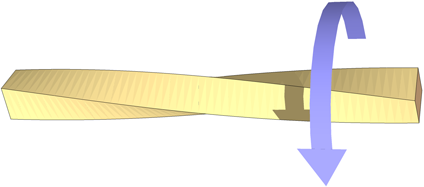
The assumptions made in the theory of torsion are as under
- The material of the shaft is homogeneous, isotropic and perfectly elastic.
- The material obeys Hooke’s law and the stress remains within limit of proportionality
- The twisting couples act in the transverse planes only.
- All radii remain straight after torsion.
- Parallel planes normal to the axis do not warp or distort after torsion.
- A cross-section at any axial length rotates as a rigid- plane, i.e., all diameters of a cross-section rotate through the same angle.
STRENGTH OF MATERIALS ACE GATE NOTES : CLICK HERE
CYLINDERS AND SPHERES
Cylinders and spheres subjected common in engineering practices such as steam boilers, tanks, chambers of engines, reservoirs, etc. These are also to fluid pressure are known as pressure vessels or shells. Due to the internal or the external pressure on the walls of a pressure vessel, stresses are induced in them from which the thickness can be determined while designing. In a cylindrical vessel, there are three principal stresses circumferential or hoop stress, longitudinal stress and radial stress.

A shell may be termed as thin or thick depending upon the ratio of the thickness of the wall to the diameter of the shell. If the ratio is less than aboutI to 15, a shell is considered as thin, otherwise it is thick. In a thin shell, it can be assumed that the hoop stresses are constant over the thickness and the radial stress is small and may be neglected.
STRENGTH OF MATERIALS AE/AEE NOTES : CLICK HERE
CIRCULAR PLATES
Many times, there are cases of loaded circular plates. The load may be symmetric or asymmetric about the central vertical axis of a horizontal plate. In symmetric loading, there can be one point load at the centre or a number uniformly distributed loads arranged can be solid or annular. Also, rigidly fixed edges of of point loads or symmetrically. The plates there can be simply supported or the plates. In all the cases, stresses are developed in the plates and deflection takes place. To develop the theory for asymmetric loading is very complex and thus only simple in this chapter. In case of beams, bending is about one horizontal axis. In plates, it is about two horizontal axes and is symmetric if the load is symmetric.
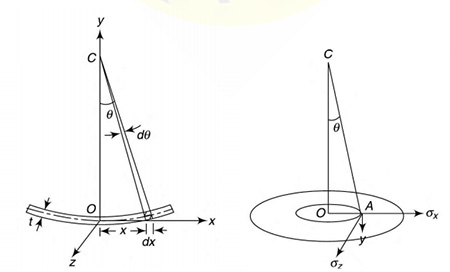
STRENGTH OF MATERIALS TEXTBOOK PDF
DOWNLOAD LINK : CLICK HERE
PASSWORD : CivilEnggForAll
OTHER USEFUL BOOKS
- RAJASTHAN STAFF SELECTION BOARD (RSSB) JUNIOR ENGINEER DIPLOMA CIVIL ENGINEERING EXAM 2022 – HINDI & ENGLISH MEDIUM SOLVED PAPER – FREE DOWNLOAD PDF (CivilEnggForAll.com)
- ISRO TECHNICAL ASSISTANT EXAM 2022 – CIVIL ENGINEERING – HINDI & ENGLISH MEDIUM – SOLVED PAPER – FREE DOWNLOAD PDF (CivilEnggForAll.com)
- MADHYA PRADESH PUBLIC SERVICE (MPPSC) COMMISSION – ASSISTANT ENGINEER EXAM – MPPSC AE 2021 CIVIL ENGINEERING – SOLVED PAPER WITH EXPLANATIONS – PDF FREE DOWNLOAD
- BIHAR PUBLIC SERVICE COMMISSION (BPSC) ASSISTANT ENGINEER EXAM – 2022 – CIVIL ENGINEERING – SOLVED PAPER – FREE DOWNLOAD PDF (CivilEnggForAll.com)
- ODISHA PUBLIC SERVICE COMMISSION – OPSC AEE PANCHAYATI RAJ EXAM 2021 – SOLVED PAPER WITH EXPLANATION – FREE DOWNLOAD PDF









